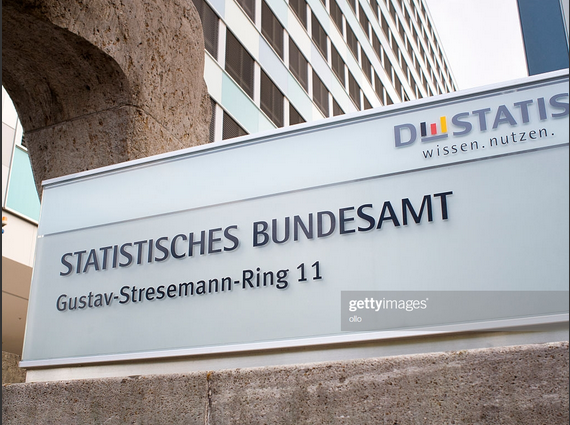Giuseppe Sandro Mela.
2021-08-27.

In sintesi.
– I 301mila “paperoni” del nostro Paese nel complesso possiedono 593 miliardi, in crescita rispetto ai 498 del 2019
– non solo sono di più, ma che ognuno di loro è più ricco di prima
– Tra i motivi della grande disuguaglianza tra l’andamento dei redditi e quello dei patrimoni vi è naturalmente il carattere molto atipico di questa crisi, che a differenza della precedenza, quella tra il 2008 e il 2013, non è stata finanziaria
– hanno beneficiato degli stimoli dei governi e delle Banche Centrali varati per alleviare e contrastare le conseguenze economiche dei lockdown
– L’aumento dei listini ha provocato, in un Paese in cui i patrimoni vengono investiti molto in equity, un incremento degli asset
– una crescita dei valori degli immobili nelle grandi città del Nord Ovest, come Milano, dove si è avuto un balzo del 9,2%
* * *
– a livello mondiale sono 20.8 milioni di individui
– Insieme i milionari di America, Cina, Giappone e Germania rappresentano il 62.9% del totale mondiale.
* * * * * * *
I ricchi italiani sono cresciuti persino nel 2020
Quelli con più di un milione di patrimonio sono passati da 298 a 301mila.
La devastante crisi economica del 2020 ha colpito il tessuto economico e sociale del Paese in modo vastissimo, eppure alcuni segmenti sembrano essere stati risparmiati. Tra questi i ricchi. Secondo l’ultimo report di Capgemini sulla ricchezza a livello mondiale coloro che hanno un patrimonio di più di un milione di dollari sono aumentati ovunque l’anno scorso, e anche in Italia.
Quanti sono i ricchi italiani?
Dei 20,8 milioni di individui che superano questa soglia i ricchi italiani sono 301mila, in crescita rispetto ai 298mila del 2019. Certo, si tratta di un aumento limitato, soprattutto se paragonato a quello globale del 6,3%, ma comunque un aumento. A fare eccezione tra i Paesi avanzati solo il Regno Unito, in cui invece i milionari sono diminuiti del 3%. Qui del resto la recessione, del 9,9%, è stata addirittura più importante che nel nostro Paese. E poi il Brasile, dove invece sono scesi del 6,6%
Molto diversamente è andata negli Stati Uniti, dove coloro con un patrimonio superiore al milione sono cresciuti di ben l’11,3%, persino più che in Cina, passando da 5 milioni e 909mila a 6 milioni e 575mila. Si tratta del Paese in cui sono di più nel mondo, seguito da Giappone, Germania e Cina. Insieme i milionari di queste quattro economie rappresentano il 62,9% del totale mondiale. Nel 2019 erano il 61,6%, nel 2012 il 58,4%. Significa che la ricchezza si è ulteriormente concentrata.
Il patrimonio dei miliardari italiani.
I 301mila “paperoni” del nostro Paese nel complesso possiedono 593 miliardi, in crescita rispetto ai 498 del 2019. Il tasso di crescita a livello di patrimonio supera quello a livello di numerosità di ricchi italiani. Vuol dire che non solo sono di più, ma che ognuno di loro è più ricco di prima. Nel mondo l’aumento è stato del 7,6%, un incremento superiore a quello medio tra 2013 e 2019, del 5,8%. Nell’anno della pandemia in sostanza la ricchezza non è solo cresciuta, ma ha accelerato il proprio incremento. In particolare in Nordamerica e in Medio Oriente.
E la cosa è ancora più valida per i super-ricchi, ovvero per la punta della piramide che Capgemini identifica con coloro che hanno un patrimonio superiore a 30 milioni di dollari. Questi sono l’1% di tutti i milionari, 200.900 persone a livello mondiale, ma hanno il 34% di tutti i patrimoni posseduti dai ricchi. Il loro numero è cresciuto del 9,6% nel 2020 e i loro asset del 9,1%, mentre quelli di chi aveva tra uno e 5 milioni sono aumentati “solo” del 6,3%.
Perché i ricchi diventano più ricchi?
Tra i motivi della grande disuguaglianza tra l’andamento dei redditi e quello dei patrimoni vi è naturalmente il carattere molto atipico di questa crisi, che a differenza della precedenza, quella tra il 2008 e il 2013, non è stata finanziaria. Non è iniziata con un crollo della Borsa o con lo scoppio di una bolla.
Anzi, le Borse mondiali hanno beneficiato degli stimoli dei governi e delle Banche Centrali varati per alleviare e contrastare le conseguenze economiche dei lockdown. Questo è vero soprattutto per gli Stati Uniti, dove questi interventi sono stati ancora più massicci che in Europa. L’aumento dei listini ha provocato, in un Paese in cui i patrimoni vengono investiti molto in equity, un incremento degli asset.
In Italia è andata diversamente.
Il recupero del Ftse Mib entro il 2020 non è stato così rilevante, ma soprattutto è al mattone, vecchio amore dei ricchi italiani, che si deve guardare per capire i motivi della crescita dei patrimoni. Dopo anni di stagnazione dei prezzi delle case, a dispetto degli incrementi che si segnalavano in altri Paesi, nel nostro nel 2020 sono aumentati del 2,5% circa, molto più del Pil, soprattutto per una crescita dei valori degli immobili nelle grandi città del Nord Ovest, come Milano, dove si è avuto un balzo del 9,2%. Ed è soprattutto in queste realtà che i milionari in Italia hanno maggiori proprietà. La speranza è che l’aumento dei patrimoni sia seguito quest’anno e i prossimi anche da uno sostenuti dei redditi.











